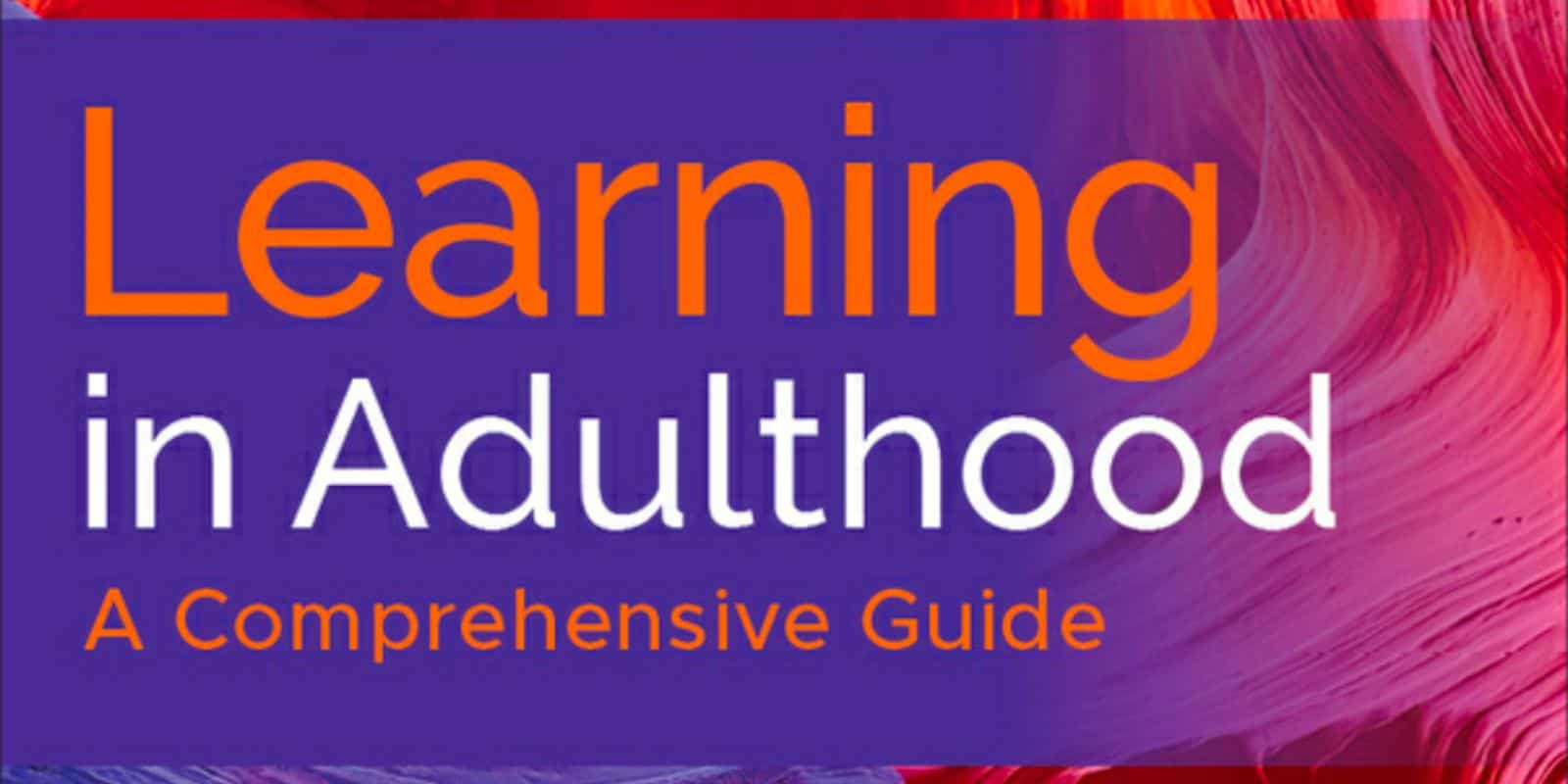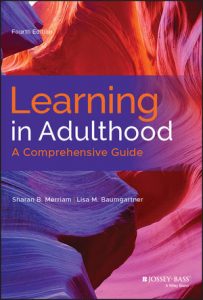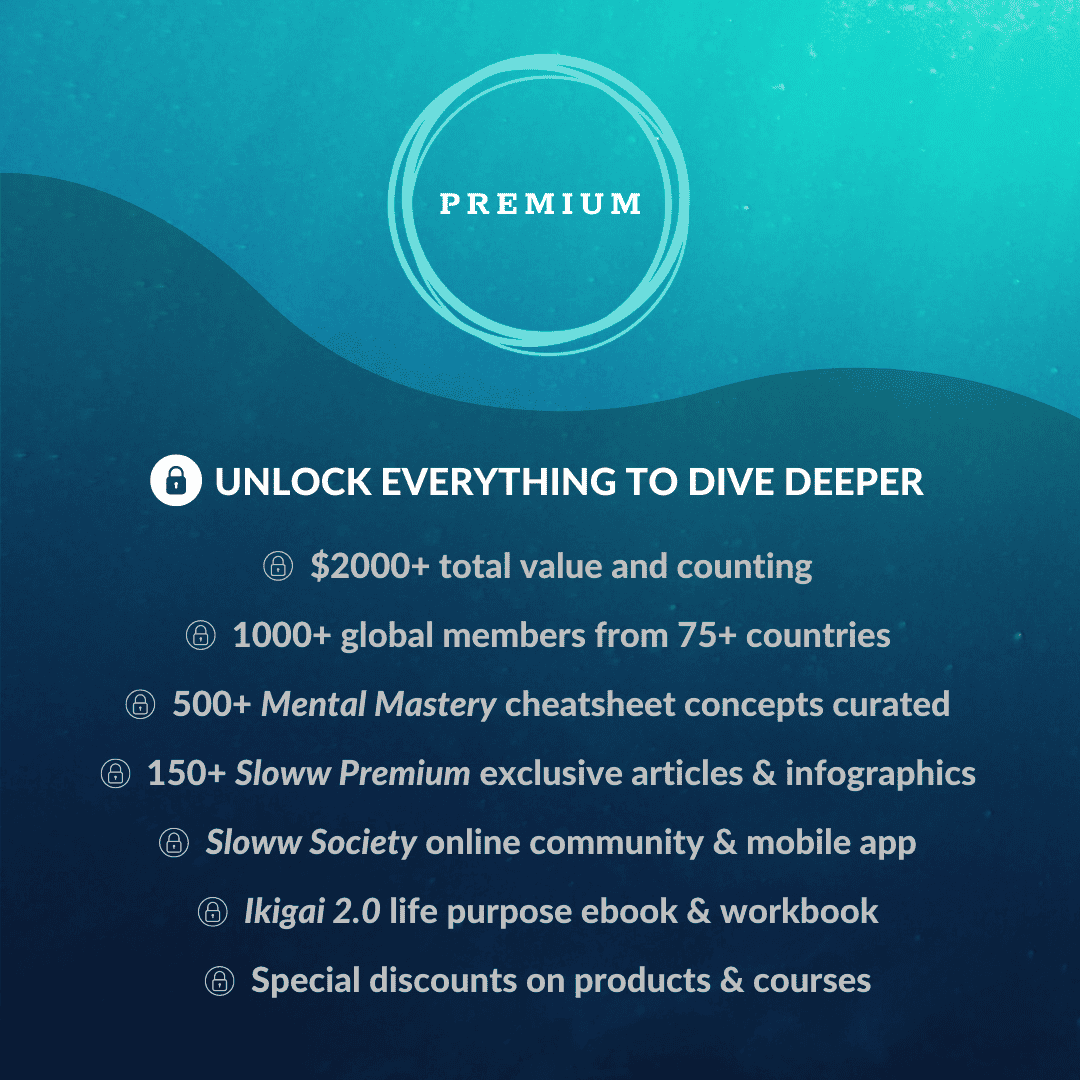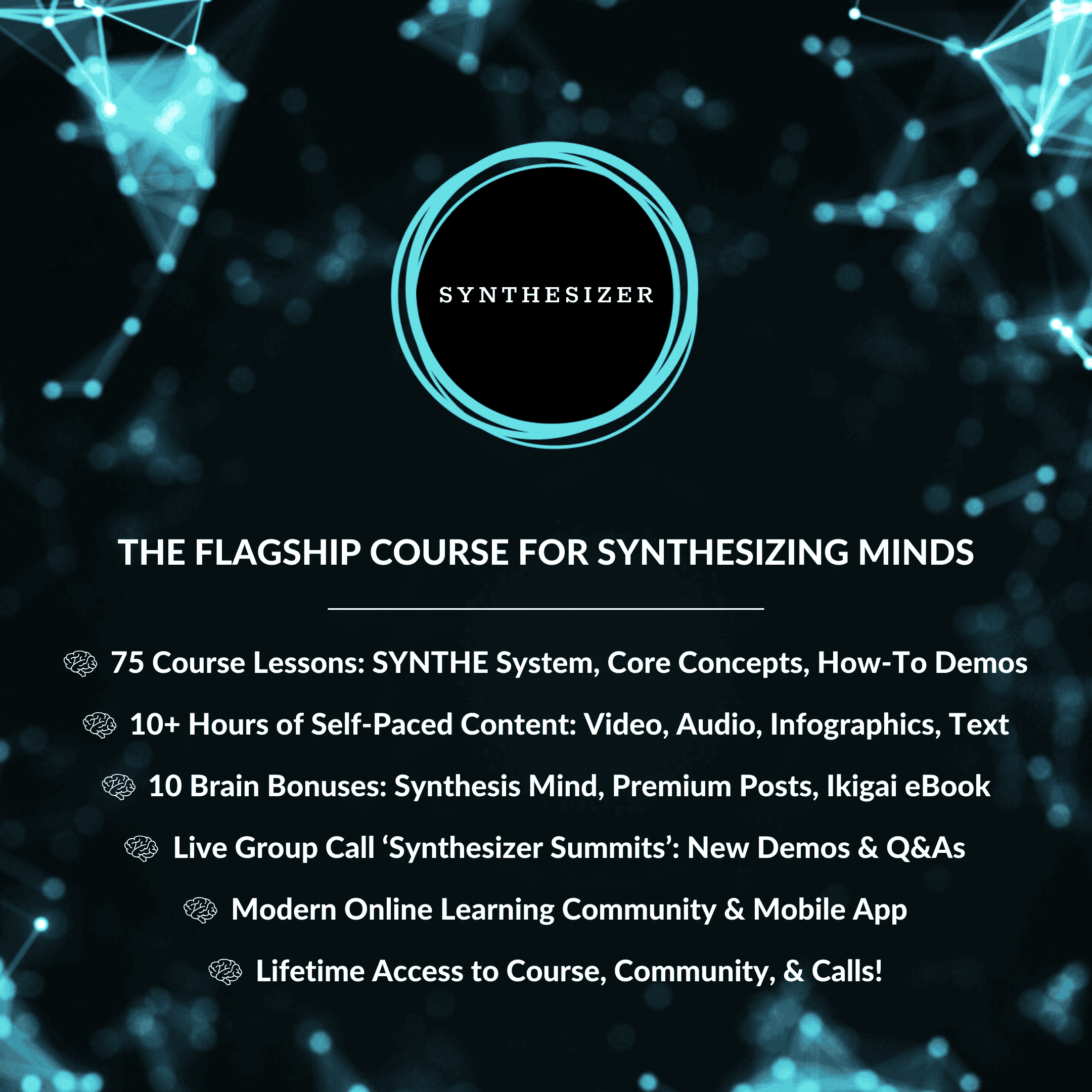This is a book summary of Learning in Adulthood: A Comprehensive Guide by Sharan Merriam and Lisa Baumgartner (Amazon).
Quick Housekeeping:
- All content in quotation marks is from the author(s) (content not in quotations is paraphrased).
- All content is organized into my own themes (not necessarily the authors’ chapters).
- Emphasis has been added in bold for readability/skimmability.
Book Summary Contents:
- Adult Learning, Lifelong Learning, & Learning Society
- Formal, Nonformal, Informal, & Self-Directed Learning
- Transformative Learning
- Adult Development
- Dialectical Thinking & Wisdom
- Eastern & Indigenous Perspectives

A Comprehensive Guide to Lifelong Learning: Learning in Adulthood (Book Summary)
Adult Learning, Lifelong Learning, & Learning Society
“It can be argued that the nature of society at any point in time determines the relative emphasis placed on adult learning … Economic factors are shaping the nature of our society, and by extension, the nature of learning that adults are most likely to undertake. A global economy, the shift to a service and information society, and consequent changes in the configuration of the labor force are determining to a large extent where learning takes place, what is offered, and who participates.”
Andragogy:
- the art and science of helping adults learn (contrasted with pedagogy, the art and science of helping children learn).
Adult learning:
- an intensely personal activity (a personal process, but a process that is shaped by the context of adult life and the society in which one lives).
- intimately related to the world and affected by it (does not occur in a vacuum; rarely occurs in isolation from the world in which the learner lives).
- an interactive process between the learner and the social context (what one needs or wants to learn, what opportunities are available, and the way one learns are to a large extent determined by the society in which one lives).
- reflects and responds to the forces prevalent in the sociocultural context (is responsive to the context in which it takes place, it affects that same context).
Lifelong learning:
- is a broader term than lifelong education because it incorporates all forms of learning (not just the formal educational system).
- recognizes the prevalence and value of nonformal and informal learning along with the traditional formal system (this broader perspective can be seen in practice in some societies’ efforts to implement lifelong learning in their societies, communities, and learning cities and regions; the term ‘learning society’ is an attempt to capture these efforts).
Learning society:
- takes human beings as its beginning point (rather than educational institutions).
- is a response to the social context / acts in response to social change (the more prevalent or profound the changes that occur in a society, the greater the likelihood that it will be regarded as a learning society).
- can be considered as an expression of lifelong learning that is place-bound (differs according to the particular society).
Formal, Nonformal, Informal, & Self-Directed Learning
“We’ve been conditioned to think of learning as courses or workshops sponsored by the workplace, colleges and universities, public schools, and other formal organizations. Yet most learning in adulthood is much more informal.”
Formal learning:
- highly institutionalized, bureaucratic, curriculum driven (and formally recognized with grades, diplomas, or certificates).
- sitting in a classroom, with an instructor, learning in a variety of ways (from formal lectures to small-group interactions).
Nonformal learning:
Also known as: community-based learning.
- organized learning opportunities outside the formal educational system (although typically have a curriculum and often a facilitator).
- tend to be short term and voluntary (and have few if any prerequisites).
- usually a local focus on civic engagement and issues of importance to the community (such as those programs offered by museums, libraries, hospitals, service clubs, and religious and civic organizations).
Informal learning:
- by far the most prevalent form of adult learning (the ‘base of the iceberg’ upon which formal and nonformal learning rests).
- takes place without externally imposed curriculum (of either formal or nonformal educative programs).
- spontaneous, unstructured, everyday learning (that goes on daily in the home and neighborhood, behind the school and on the playing field, in the workplace, marketplace, library and museum, and through the various mass media; occurs informally and apparently by chance in everyday life as one moves around the spaces of one’s life without consciously intending to learn anything, but often busily absorbed in getting everything to function, and more or less understanding it).
- can be transformative or additive (in the sense of acquiring more knowledge or skills).
- can be self-directed (intentional and conscious), incidental (unintentional but conscious), or tacit (unintentional and unconscious).
Self-directed learning:
Also known as: self-planned learning, self-teaching, independent study, or self-regulated learning.
- intentional and conscious process in which individuals take the initiative, with or without the help of others (in diagnosing their learning needs, formulating learning goals, identifying human and material resources for learning, choosing and implementing appropriate learning strategies, and evaluating learning outcomes).
- focuses upon learning that is guided by metacognition (thinking about one’s thinking; becoming critically aware of what has been taken for granted about one’s own learning).
- fosters transformational learning and promotes emancipatory learning and social action (strong sense of social responsibility and desire to contribute to the well-being of others).
- driven by wonder, curiosity, and vision (characterized by originality, contribution, and the ah-hah experience).
Transformative Learning
Also known as: transformational learning. Transformative learning is about change (dramatic, fundamental change in the way we see ourselves and the world in which we live; the mental construction of experience, inner meaning, and reflection are common components of this approach).
Psychocritical approach (Mezirow):
Learning = the process of using a prior interpretation to construe a new or a revised interpretation of the meaning of one’s experience in order to guide future action.
Frame of reference = structures of assumptions and expectations on which our thoughts, feelings, and habits are based.
Habits of mind (meaning perspective) = how we see the world based on our background, experience, culture, and personality.
Points of view (meaning schemes) = sets of immediate, specific beliefs, feelings, attitudes, and value judgments—that tacitly direct and shape a specific interpretation and determine how we judge, typify objects, and attribute causality.
- most often set in motion by a disorienting dilemma (a particular life event or life experience such as the death of a loved one or an illness that a person experiences as a crisis; this crisis cannot be resolved through the application of previous problem-solving strategies; one’s familiar patterns of coping with life events prove ineffective).
- occurs when there is a transformation in one of our beliefs or attitudes or a transformation of our entire perspective (results in a more inclusive, discriminating, permeable, and integrative perspective; one that better accommodates the meaning one makes of one’s experience).
- individual development is both inherent in and an outcome of the process (development is a phased and often transformative process of meaning becoming clarified through expanded awareness, critical reflection, validating discourse and reflective action as one moves toward a fuller realization of agency).
- is learning that transforms problematic frames of reference (to make them more inclusive, discriminating, reflective, open, and emotionally able to change).
- critically self-examining the assumptions and beliefs that have structured how a experience has been interpreted (this sets in motion a revision of specific assumptions about oneself and others until the very structure of assumptions becomes transformed; promote and facilitate individual critical reflection; critically reflecting on assumptions and biases; more rational and objective assessment of assumptions; freed from uncritical acceptance of others’ purposes, values, and beliefs).
- tests whether our new meanings are true or authentic (to arrive at the best possible judgment, we seek out a variety of opinions, including ones that challenge the status quo; the new meaning created by a perspective transformation is highly subjective and changeable).
- engages in reflective discourse (discourse is the specialized use of dialogue devoted to searching for a common understanding and assessment of the justification of an interpretation or belief; seek different viewpoints, weigh evidence for and against the argument, and critically assess assumptions in order to arrive at a best or more dependable judgment).
- perspective transformation leads to action and may also result in social action (immediate action, delayed action, or reasoned reaffirmation of an existing pattern of action; action can mean making a decision, being critically reflective or transforming a meaning structure as well as a change in behavior; individual transformation precedes social transformation; we must begin with individual perspective transformations before social transformations can succeed).
- may be sudden and dramatic (epochal) or they may be slower (incremental) changes (transformations likely to produce developmentally advanced meaning perspectives usually appear to occur after the age of thirty).
10 Steps/Phases:
Mezirow’s recursive 10-step, or 10-phase model contains four main components: experience, critical reflection, reflective discourse, and action. In short, the learner must critically reflect on his or her experience, talk with others about his or her new worldview in order to gain the best judgment, and act on the new perspective.
- Disorienting dilemma.
- Self-examination which is often accompanied by feelings of fear, anger, guilt or shame.
- Critical assessment of assumptions.
- Recognizing that others have gone through a similar process.
- Exploring options for forming new roles, relationships, or actions.
- Formulating a plan of action and acquiring knowledge and skills.
- Trying out new roles.
- Renegotiating relationships.
- Building competence and self-confidence in the new roles and relationships.
- Reintegration back into one’s life based on the new, transformed perspective.
Psychodevelopmental approach (Daloz):
Adult learning = a transformational journey.
Education = should promote significant learning that entails development.
Development = successively asking broader and deeper questions of the relationship between oneself and the world.
- the goal is lifelong personal development (with the teacher serving as a mentor in the transformative learning process).
- focuses on the intuitive nature of transformative learning (which champions the importance of stories in the process).
- takes a storied approach to development and transformative learning (through storytelling, we journey toward a more holistic and transformed worldview).
- recognizes that people need to make meaning of their experiences (and that individuals are often in a developmental transition when they seek higher education to help them make sense of lives whose fabric of meaning has gone frayed).
- recognizes the importance of cognitive growth (and acknowledges the whole person in that growth).
Psychoanalytic approach (Boyd):
Transformation = a fundamental change in one’s personality involving conjointly the resolution of a personal dilemma and the expansion of consciousness resulting in greater personality integration.
- grounded in depth psychology (explains the importance of symbols and the unconscious in the transformative learning process).
- an inner journey of individuation (from parts of the psyche such as the ego and the collective unconscious).
- integrating/uniting separate parts of the self (and having a relationship between the individual and the collective).
Social-emancipatory approach (Freire):
The best-known sociocultural approach to transformative learning.
- emerges from the context of poverty, illiteracy, and oppression (and is set in a larger framework of radical social change).
- the goal is liberation, or praxis (the action and reflection of men and women upon their world in order to transform it; personal empowerment and social transformation are inseparable processes).
Process of conscientization:
“Although conscientization is always a political act in Freire’s theory, it can be seen as similar to perspective transformation in its characterization of adult learning as the process of becoming aware of one’s assumptions, beliefs, and values and then transforming those assumptions into a new perspective or level of consciousness.”
- an ongoing process where the learner becomes increasingly aware of the various oppressive forces in his or her life (and eventually becomes part of the process of social change).
- begins with dialogue (through dialogue, generative themes or concerns are posed by the learners themselves and become the content of a learning situation).
- occurs at several levels (least-aware levels = a magical, fatalistic consciousness in which nothing about one’s world is questioned, external forces are in charge, and there is nothing that can be done to change things as they are; midway between being totally unaware and critical consciousness = people begin to sense that they may have some control over their lives and turn to questioning things as they are; most sophisticated stage of consciousness = critical consciousness where one achieves an in-depth understanding of the forces that shape one’s life space and becomes an active agent in constructing a different, more just reality).
Adult Development
“In addition to the centrality of experience and critical reflection, there is in transformational learning theory the notion of individual development.”
Linking transformational learning & adult development:
“Adult development and transformational learning are closely intertwined … That the outcome of transformational learning is development is congruent with the growth orientation of much of adult learning literature generally … There is little doubt that there is a strong link between the motivation to participate in a learning activity and an adult’s life experiences and developmental issues … Learning in adulthood is a function of social roles and developmental issues.”
- “Rogers (1961) contended that ‘significant learning’ results in a more mature self who is open to experience, to ‘new people, new situations, new problems.'”
- “Knowles’s (1980) model of andragogy is written quite explicitly from this humanistic perspective, defining adult learning as ‘a process that is used by adults for their self-development’ and ‘to mature.'”
- “Jack Mezirow (1991) unequivocally states that the process of perspective transformation is ‘the central process of adult development.'”
- “Kegan (1994) wrote that higher and adult education’s ‘mission’ is to ‘assist adults in creating the order of consciousness the modern world demands.'”
Individual, adult development:
- a phased and often transformative process of meaning becoming clarified through expanded awareness, critical reflection, validating discourse and reflective action (as one moves toward a fuller realization of agency).
- both inherent in and an outcome of the process (the ability to think critically, which is mandatory to effecting a transformation, is itself developmental; that is, we can become better, more critical thinkers).
- systematic, qualitative changes in human abilities and behaviors (as a result of interactions between internal and external environments).
Dialectical Thinking & Wisdom
Dialectical thinking:
“According to Riegel (1973), ‘Dialectic conceptualization characterizes the origin of thought in the individual and in society and represents a necessary synthesis in the development of thought toward maturity.'”
- allows for the acceptance of alternative truths/ways of thinking and ambiguities in thought processes about the many contradictions and paradoxes that we face in everyday life (understand constant change and contradiction are part of life, and they recognize these contradictions in their own personalities; people are not only ready to live with life’s inherent contradictions and ambiguities but will accept these contradictions as a basic property of thought and creativity; has been associated positively with creativity).
- can accept contradictions in arguments and hold opposing views simultaneously (by being able to view arguments from multiple viewpoints).
- based on change, interdependence, and contradiction (whereas analytical thinking is founded on analysis and rules).
- scores higher on divergent thinking, flexibility, openness, and originality (than formal thinkers).
Wisdom:
Wisdom is often seen as the pinnacle or hallmark of adult thinking.
- insight and knowledge about oneself and the world (self-understanding; knowledge of life; allows us to live with ourselves, even with the many possible, plausible, and competing worldviews and epistemologies we are confronted with as we move through life; the self becomes understood not as a unit seeking stability, but rather as a process where the sub-parts constantly shift, adjust, and change).
- meta-knowledge (knowledge about the limitations of knowledge and about when to apply which strategy of problem-solution or self-regulation).
- sound judgment (in the case of difficult life problems; acknowledgment of uncertainty).
- emotional homeostasis (and sense of humor).
- the ability to distinguish (often quite subtle variations in different qualities and characteristics of others).
- a kind of caring for the other (even another we might not agree with, feel empathy for, or ‘love’).
- respect manifests gratitude and an expanded sphere of consideration (for both other people and the many interconnected parts of the environments where we live).
- use of one’s intelligence, creativity, and knowledge and as mediated by positive ethical/prosocial values toward the achievement of a common good (through a balance among intrapersonal interests, interpersonal interests, and extrapersonal interests over the short and long terms; engagement displays itself in the wider world as committed action for the common good, what is good for many of us, not just me and the people like me).
Eastern & Indigenous Perspectives
From this small sampling of Eastern and indigenous perspectives we can see a number of themes about learning that stand in contrast with Western views. The four themes of interdependent, communal, holistic, and informal learning highlight different emphases in learning, rather than suggesting an either/or stance.
Interdependence:
Eastern and indigenous learning systems appear to place a greater emphasis on interdependence as a value to be developed versus independence.
- There is an emphasis on interdependence instead of independence in learning.
- Identity, self-concept, and self-esteem are developed and enhanced only in relation to others.
- In collective societies, people are part of a group and their social roles and expectations within society are dependent upon the interaction of others.
Communal:
Eastern and indigenous learning systems link communal or community concerns with learning.
- The notion of interdependence is linked to the communal nature of learning in non-Western systems rather than the more isolated Western teaching-learning transaction.
- It is the responsibility of all in the community to teach and to learn.
Holistic:
Eastern and indigenous learning systems see learning as a holistic activity with a spiritual aspect, in contrast to the cognitive emphasis of the West.
- A holistic approach that includes the spirit, mind, body, and emotional components of learning, or some combination of these, is emphasized over the Western focus on the cognitive.
- In Eastern and indigenous traditions, education and learning are in the service of developing more than just the mind. They are also to develop a good person, a moral person, a spiritual person, one who not only contributes to but also uplifts the community.
- Eastern cultures tend to engage in more holistic thinking, and dialectical thinking is an important aspect of holistic thinking.
Informal:
Eastern and indigenous learning systems value and recognize informal learning as legitimate.
- Learning is primarily informal, is embedded in everyday life, and is lifelong.
Wisdom:
Eastern and Western cultures have different ways of viewing wisdom. Practical application is more important in Eastern definitions of wisdom than in the West.
- West: wisdom is viewed as a personality characteristic, or competence, a higher level of cognitive development or a collective system of knowledge about the meaning and conduct of life; wisdom is synonymous with reasoning ability, sagacity, learning from ideas and environment, judgment, expeditious use of information, and perspicacity.
- East: wisdom does not reside only within an individual but emerges from the interaction between individuals and their surroundings; the Japanese stress knowledge and education, understanding and judgment, sociability and interpersonal relationships, and introspective attitudes.
You May Also Enjoy:
- Understanding and Promoting Transformative Learning by Patricia Cranton | Book Summary
- Introduction to Interdisciplinary Studies by Allen Repko, Rick Szostak, and Michelle Phillips Buchberger | Book Summary
- The 7 Transdisciplinary Cognitive Skills for Creative Education by Danah Henriksen | Book Summary
- A Synthesizing Mind by Howard Gardner | Book Summary
- Metathinking by Nick Shannon and Bruno Frischherz | Book Summary
- Make It Stick by Peter Brown, Henry Roediger III, and Mark McDaniel | Book Summary | 🔒 How to Apply It
- Range by David Epstein | Book Summary
- Ultralearning by Scott Young | Book Summary
- How to Read a Book by Mortimer Adler | Book Summary | 🔒 How to Apply It
- How to Take Smart Notes by Sönke Ahrens | Book Summary 1, 2 | 🔒 How to Apply It





